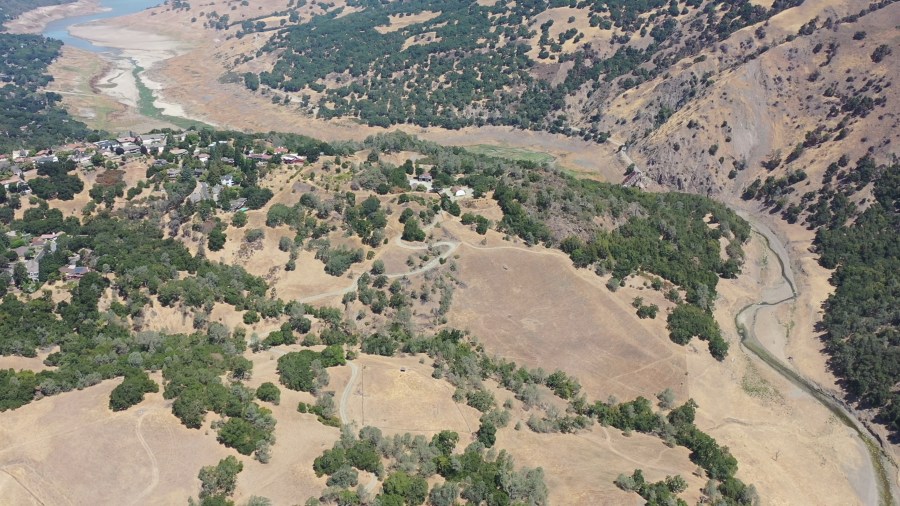SAN JOSE, Calif. (KRON) — As the dry and warm season continues, Santa Clara County residents are being asked to lead water conservation efforts.
In San Jose, two consecutive winters with little rainfall is recorded to be the driest year in over 125 years, marking it one of the worst droughts in the county’s history.
“Unfortunately I think it’s going to get worse with just the way with how winter is going to be, it could be really dire,” said Gary Kremen, director of Santa Clara Valley Water.
“What are you going to do? What’s agriculture going to do?,” added Kremen.
“We’re concerned, we’re beyond concerned, we’re scared.”
Various factors set the county apart from other regions who are also experiencing dry conditions.
To start, Santa Clara Valley Water (Valley Water), the county’s wholesale water provider, relies on water from the snowpack that the Sierra Nevada mountains produce, nearly 200 miles away.
Climate change has affected the last two winters and as a result, did not produce enough snowfall, the agency tells KRON4 News they only received 5% of the water it contracts from the state this year.
Making matters worse, the largest reservoir in Valley Water’s system is currently nearly empty at only 3% full capacity.
“And additionally, our [water] storage has to be upgraded for seismic reasons, so half of our storage is inoperable for as long as 10 years,” said Kremen.

Alternative solutions
Valley Water is currently exploring alternative solutions for future water shortages.
Kremen tells KRON4 News one solution could rely on recycling water, which will allow clean water to restore underground aquifers, most located in Gilroy and Morgan Hill.
“Conservation is always something we can do, we need to make that a way of life, but we need to build more storage,” said Kremen.
“But there’s opposition, there’s significant, strong opposition in building more storage,” Kremen added.
“So we’re in a pickle that’s no easy way out.”
Valley Water says it has already begun recycling some of its water but much work is still left to be done as rising temperatures are affecting San Jose’s very own water supply.
“Basically all weather is affected by temperature and some are much more complicated than others, but the drought is an example of something that’s impacted by temperatures,” said Patrick Brown, Meteorology and Climate Science Professor at San Jose State University.
With rising temperatures, the snowpack that fills up the system that supplies water to San Jose is being threatened.
“What we do see is that as it gets warmer more precipitation falls as rain rather than snow,” said Brown.
“And that’s important because our snowpack in the Sierra Nevada acts as a reservoir for water,” Brown added.
“But if more of that precipitation falls as rain both in the fall and in the spring, then you’re going to have that running off into rivers much quicker, much closer to the winter season rather than spread out over the dry season.”
Water Restrictions
Water conservation efforts are now in full swing.
In June, Valley Water declared a water shortage emergency and called for a mandatory 15% reduction in water usage compared to 2019.
“Unfortunately, or fortunately, we believe brown is the new green and that’s the way it is, we live in California, conservation is a way of life here,” said Liann Walborksy, director of corporate communications for San Jose Water.
“So we’ve asked all of our customers to please conserve water and to take all the steps that we’ve laid out.”
Many San Jose residents have already begun to cut back on their water.
“I think this is probably based on what many research experts say that this could be kind of what we have to deal with for a long time not having as much rain as we used to have,” said Walborksy.
San Jose Water is also recommending their nearly 1 million customers to adhere to the mandatory restrictions but are not enforcing them.
“We are not water cops who will go out and give people tickets, nobody is going out to actively enforce if you break these laws, ” said Walborksy.
“But if we do not reach our reduction goals there is that possibility that we will have to assess in early September of drought penalties as required by the California Public Utilities Commission.”